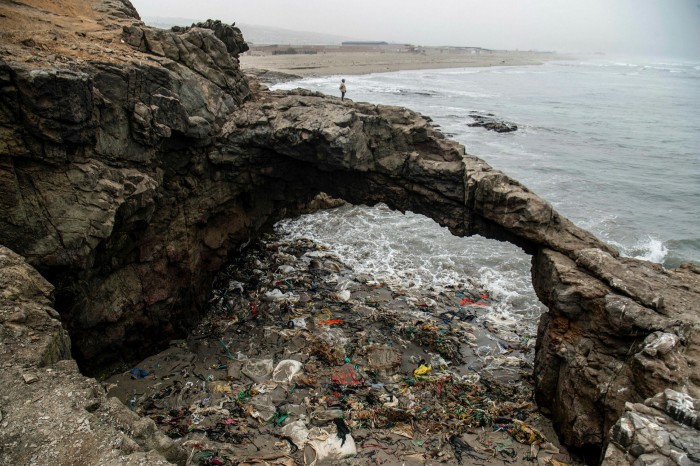Investors grapple with complexities of biodiversity

Simply sign up to the ESG investing myFT Digest -- delivered directly to your inbox.
“Irreversible consequences for the environment, humankind, and economic activity, and a permanent destruction of natural capital.” That is how the World Economic Forum characterises biodiversity loss in its 2022 Global Risks Report. No wonder investors are worried: not only is it their planet, too, but they also have portfolios to manage.
And, given the complexity of measuring nature and the impact of its loss, the finance sector can be forgiven for feeling daunted.
The numbers are alarming. About 1mn animal and plant species are at risk of extinction, according to the UN. “That [risk] exposure is rapidly becoming more apparent as we degrade the natural system because we’re farming more, using more water and cutting down forests,” says David Craig, co-chair of the Taskforce on Nature-related Financial Disclosures (TNFD), which is developing a reporting framework to help companies and investors include biodiversity in their decision making.
But, if the scale of the problem is becoming clearer, the financial impact remains difficult to quantify. “Many of the business implications of loss of biodiversity are still unclear,” says Greg Waters, associate director of research at the Value Reporting Foundation, which helps businesses and investors improve their sustainability disclosure. “For financial institutions, it means there could potentially be significant risks in their portfolios that they are not pricing appropriately.”
The race is now on to fix this blind spot. In addition to TNFD’s framework, other initiatives are under way to set targets and provide guidance for business and investors. Among them is a global biodiversity framework (GBF) that the UN is developing with a view to having it adopted at the Convention on Biological Diversity’s delayed COP15 summit, which is due to take place in Montreal in December.
While many of the targets of the GBF — which some are calling a “Paris Agreement for nature” — require governmental action, the framework itself will also help investors integrate biodiversity into their portfolios, because it calls on businesses to measure and disclose their impact and reliance on ecosystems and natural resources.
Meanwhile, almost 100 investors with collective assets totalling €14tn have signed the Finance for Biodiversity pledge, which was launched in 2020. Signatories commit to five steps: to share knowledge; to engage with companies; to assess impact; to set targets; and to report publicly on the biodiversity impact of their investments.
“We’re working on targets and pathways to make it more tangible and easier to understand,” says Anita de Horde, the pledge’s co-founder and co-ordinator.
Due to the scale of the challenge, guidance for the finance sector will be critical. “Everything you do as an investor leads to biodiversity loss because economic activity leads to biodiversity loss,” explains Hans Stegeman, chief investment strategist at Triodos Investment Management, which has signed the pledge. But, if agreeing on measurement and disclosure methods for carbon reduction in investment portfolios has been difficult, tracking industry’s impact on everything from oceans and forests to insect populations looks far tougher.
“At least climate change comes down to one metric,” says Catherine Ogden of the stewardship team at Legal & General Investment Management, another Finance for Biodiversity signatory. “Natural capital and biodiversity loss is really multi-faceted. It can be location specific, geographically specific, and sector and company specific.”
Natural resources have complex interrelationships, as well. If industrial activity wipes out a species, for, example, the effect on other ecosystems could be significant but is hard to predict.
This complexity makes it difficult for companies — and, therefore, investors — to identify biodiversity-related risks and opportunities. “Given that financial institutions are dependent on quality disclosure from the companies in their portfolio, it seems we are far off from the finance sector itself providing meaningful disclosures in this area,” says Waters.
For Craig, developing accounting definitions and taxonomies is less urgent than providing the kinds of tool kits and guidance that TNFD is developing. “A lot of people talk about putting a price on nature,” he says. “But a methodology and training and understanding is really important.”
Waters argues that existing tools, such as the investor-focused standards developed by the Sustainability Accounting Standards Board (now part of the Value Reporting Foundation), can be used to identify the risks and opportunities that are most relevant to different sectors.
For example, in the oil and gas industry, investors can assess risks such as the impact of oil spills and similar events on ecologically sensitive areas while, for apparel companies, investors should focus on the impact of sourcing and supply chain management practices.
And, although measuring biodiversity is complex, argues De Horde, this should not prevent investors from taking action. “You often hear that there are no tools and or data,” she says. “But there is enough data to identify which risk sectors and risk locations you’re exposed to, and to start understanding your portfolio in terms of biodiversity.”
Stegeman agrees. “We always should work for better data but we should not use that as an excuse for waiting to do something,” he says. “In the end, it’s common sense — if you burn down the rainforest or use a lot of land or water, that’s not sustainable for the ecosystem.”
Climate Capital

Where climate change meets business, markets and politics. Explore the FT’s coverage here.
Are you curious about the FT’s environmental sustainability commitments? Find out more about our science-based targets here

Comments